Getting started in woodworking: Building a Japanese Workbench
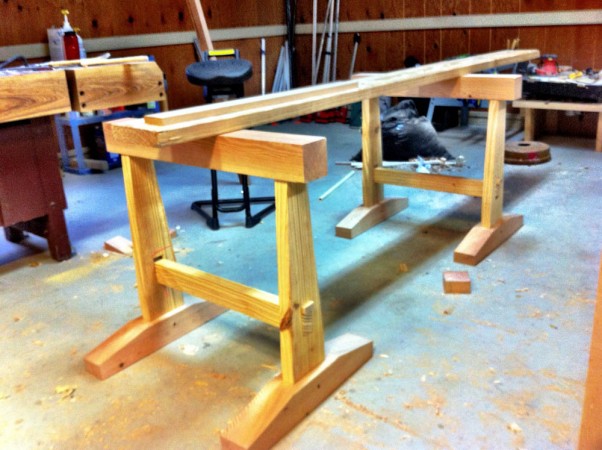
UPDATE: I finished my slab top for the workbench. See Here
For the last year or so I’ve been slowly sliding more into the Japanese side of Woodworking. My workbench isn’t always the most ideal work surface…. mostly due to the location of the tail vise… it aways seems to be in the way of where I want to saw. So I started researching what work surface Japanese woodworkers use.
Most japanese woodworkers, from what I can tell, just put a big hunk of wood on the floor and sit cross legged. Most westerners (including me) don’t like sitting on the floor much though.
But when Japanese do work standing up, I found a number of different sawhorse styles. During my research I found a old plan by Jay van Arsdale published in American Woodworker Jan-Feb 1990. These sawhorse seems to fit my desires almost perfectly and they are all built using japanese compression joints, wedges and no glue. They are a fun fast(ish) joinery project that gives you something useful to work off of for future projects.
I’ve only made a couple deviations from Jay’s plans, so refer to American Woodworker for all the dimensions.
This is part 2 of my posts for:
(part 1: tools selection can be found here)
Make sure to head over to Tom’s Workbench for more posts on getting started in woodworking by the blogging community.
1. Wood Selection
For this project you should be able to get away with 2x 8′ long Douglas Fir 4×4’s and 2x 8′ long Southern Yellow Pine 2×6’s. I got out of the local big box hardware store for under $50. Stay away from any pressure treated wood and any wood labeled “white wood” or “white pine”. Species of wood to look for: Southern Yellow Pine, Douglas Fir, Port Orford Cedar, White Cedar, Alder, or Poplar. What you find will very greatly depending on where you live just make sure it is kiln dried, and heavy.
Take your time at the store and buy the straitest and knot free boards you can find. Avoid any boards the came from the center of the tree and ideally get the ones that have the grain running diagonally.
2: Breaking it all down: A few Sawing Tips
Use your tape mesure and square to mark all of your cuts.
For every saw cut start your cut at the far side of the board, away from you. Saw very lightly and bring the saw cut all the way across the board back toward your body. When you hit the edge near you, start working down the face of the board keeping as much of the saw in the cut as you can until you have cut half way through the board at an angle. Then go to the other side of the board and repeat. Once you have complete cuts made on 3 sides of the board you can then just cut strait down. This is the most fool proof way to cut precisely. It means you are always only cutting lines you can see.
3. Layout all your joinery marks and cut the slopes on the feet
Sometimes a few clamps help.
A plane does wonders for cleaning up the faces.
4. Drill out as much as you can then use your chisels to square it up
5. Then do the same thing for the legs.
Eventually you have all your parts and are ready to assemble.
Bonus Points:
This is where I deviated from Jay’s plans a bit. If you cut a slope on the top tenon of the legs and make a matching slope on the mortice on the top of the horse then when you drive the wedge in place it draws the leg and top together even tighter. (it’s hard to photograph the mortice but i’ve undercut it with a matching slope).
6. Drill the holes in the feet, THEN insert the legs. Push the drill bit in and it will mark where the hole would line up. Then offset the hole on the tenon by about 1/8 of an inch. By doing this when you drive the peg in it will draw the joint together.
7. Make all the wedges out of the hardest wood you have around. I used some scrap Ash but the Southern Yellow Pine would work ok as well.
Right now I just have a SYP 2×6 on top as a work surface, and it works ok. Ideally you want to find the thickest widest board you can and put it on top. I’m considering 2 options: Getting 3 more 4×4’s or getting a 10″ wide 12 quarter piece of Ash. Either way it will be about a 6′ to 8′ long by ~10″ wide beam about 3″ thick. I’ll try and get something next week and make a post about adding a planing stop.
UPDATE: I finished my slab top for the workbench. See Here

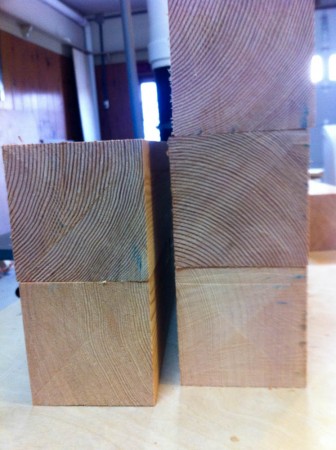

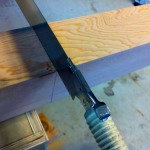
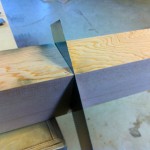
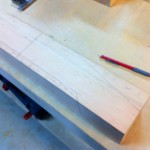
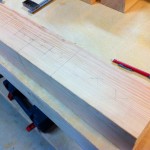
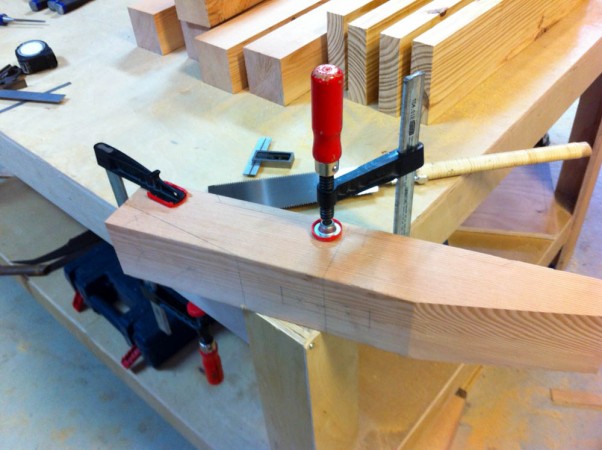
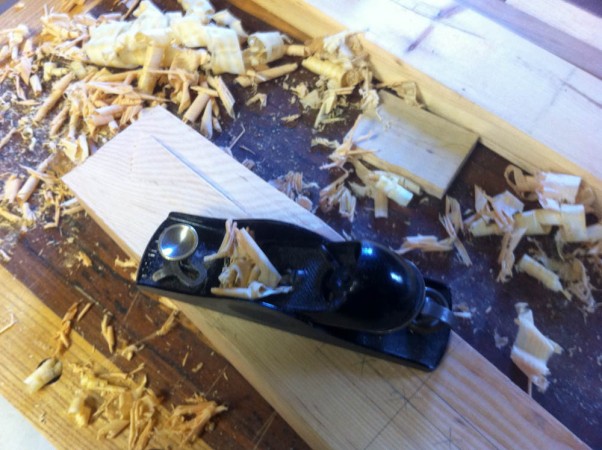
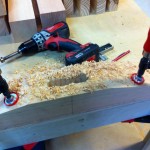
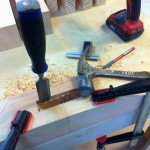
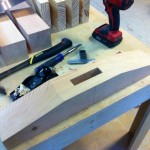
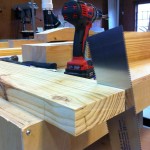
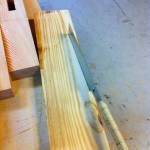

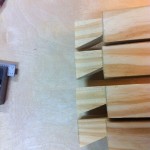
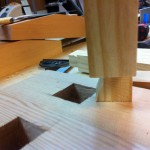


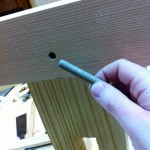
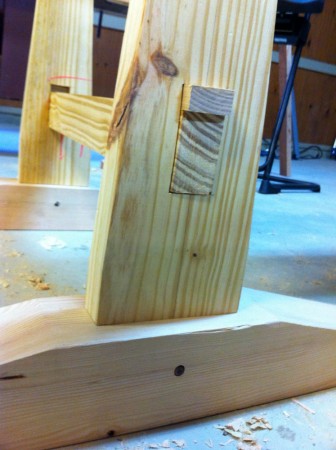
I came across similar plans in the quarterly, Make. http://makeprojects.com/Project/Workhorses/572/1